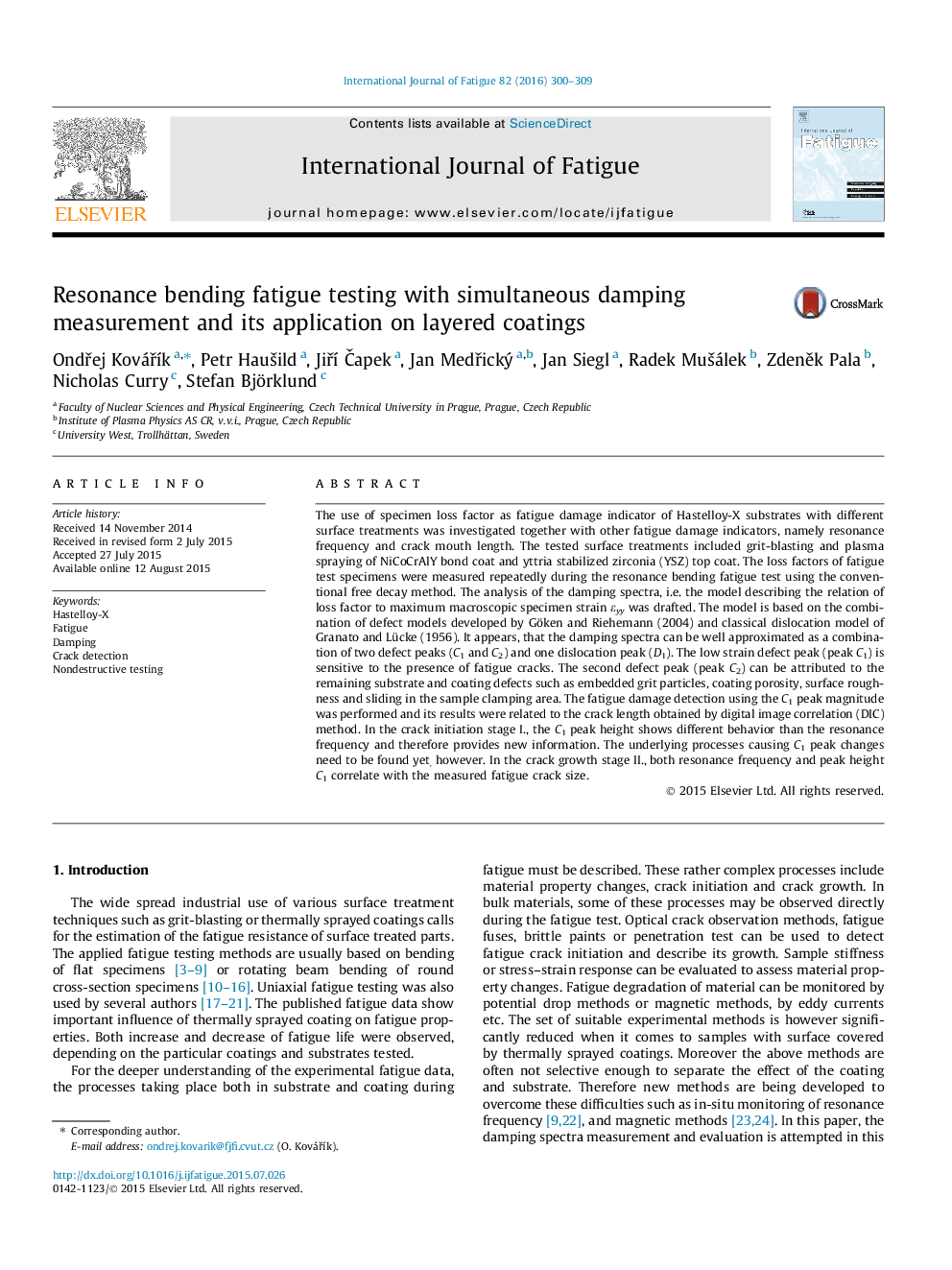| کد مقاله | کد نشریه | سال انتشار | مقاله انگلیسی | نسخه تمام متن |
|---|---|---|---|---|
| 778186 | 1463749 | 2016 | 10 صفحه PDF | دانلود رایگان |
• Fatigue cracks were detected using digital image correlation (DIC).
• The fatigue life was separated into crack initiation and propagation phases.
• The damping spectra of coated samples were measured and fitted during fatigue test.
• A low deformation spectral peak provides an indicator of fatigue crack damage.
The use of specimen loss factor as fatigue damage indicator of Hastelloy-X substrates with different surface treatments was investigated together with other fatigue damage indicators, namely resonance frequency and crack mouth length. The tested surface treatments included grit-blasting and plasma spraying of NiCoCrAlY bond coat and yttria stabilized zirconia (YSZ) top coat. The loss factors of fatigue test specimens were measured repeatedly during the resonance bending fatigue test using the conventional free decay method. The analysis of the damping spectra, i.e. the model describing the relation of loss factor to maximum macroscopic specimen strain εyy was drafted. The model is based on the combination of defect models developed by Göken and Riehemann (2004) and classical dislocation model of Granato and Lücke (1956). It appears, that the damping spectra can be well approximated as a combination of two defect peaks (C1 and C2) and one dislocation peak (D1). The low strain defect peak (peak C1) is sensitive to the presence of fatigue cracks. The second defect peak (peak C2) can be attributed to the remaining substrate and coating defects such as embedded grit particles, coating porosity, surface roughness and sliding in the sample clamping area. The fatigue damage detection using the C1 peak magnitude was performed and its results were related to the crack length obtained by digital image correlation (DIC) method. In the crack initiation stage I., the C1 peak height shows different behavior than the resonance frequency and therefore provides new information. The underlying processes causing C1 peak changes need to be found yet, however. In the crack growth stage II., both resonance frequency and peak height C1 correlate with the measured fatigue crack size.
Journal: International Journal of Fatigue - Volume 82, Part 2, January 2016, Pages 300–309
